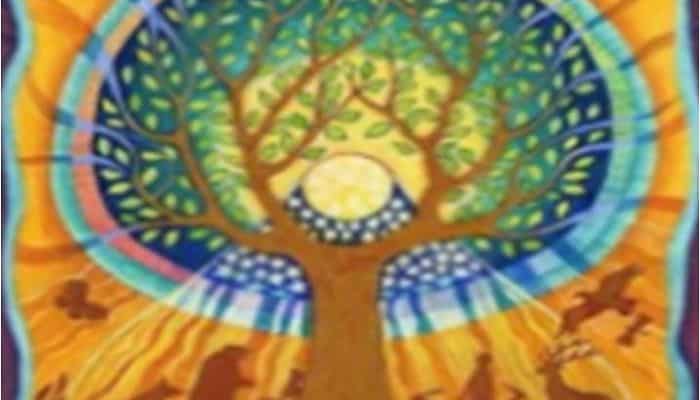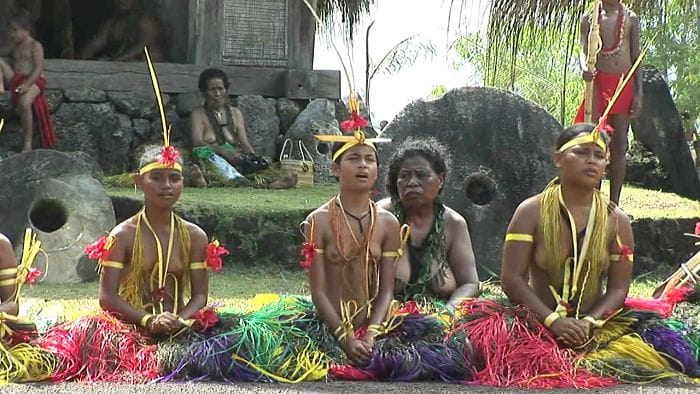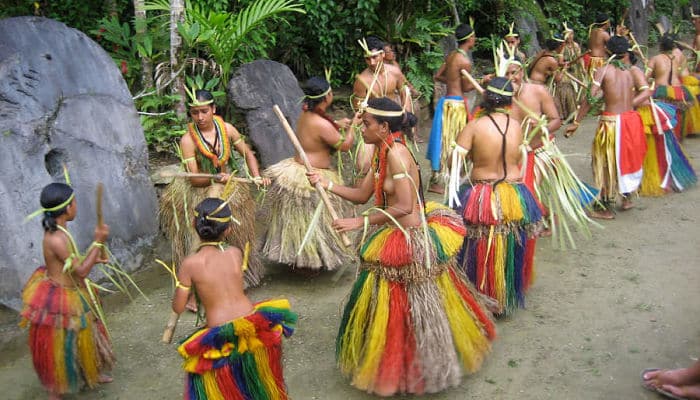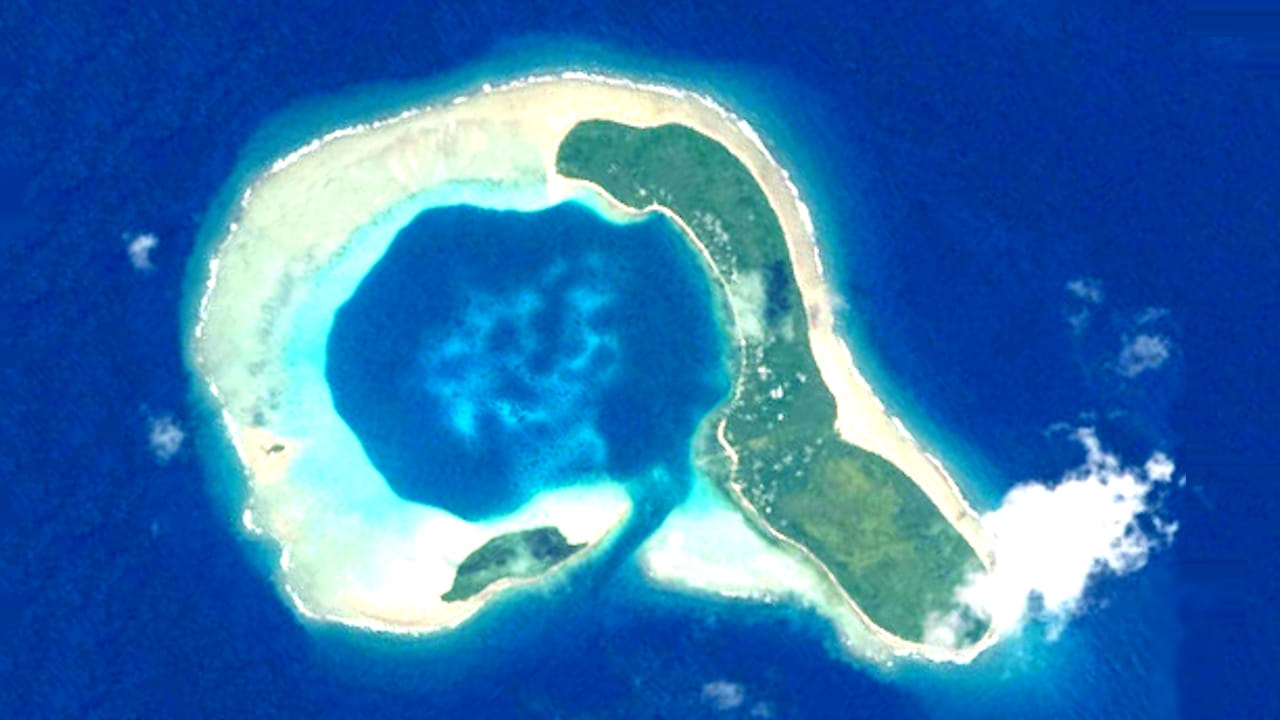Meet with us the Micronesia Mythology. A culture that offers us legends and incredible stories that still survive in the pop culture.

Micronesia Mythology
The Micronesia Mythology, actually refers to the characteristic mythology of the area called “The Federated States of Micronesia” . The name Micronesia is used to abbreviate its real name, and is divided into five sovereign and independent nations, as well as three additional territories.
The name Micronesia originates from the Greek language and means “small islands”. Its origin dates back millennia; however, there are several different theories about the origin of its first settlers.
History of the Micronesia Mythology
There are different theories of the origins of Micronesian mythology, but something in common among all of them; is that its origins date back to prehistoric times. It has been a very difficult subject to verify these stories through evidence in archaeological excavations; this is due to the geographical conditions of its islands, which has made this work impossible.
Its history is based mainly on linguistic analysis of all the territories that make up Micronesia. The main archaeological findings, which indicate their earliest civilizations have been found on the island of Sepain, indicate that they date back to 1500 B.C., even much earlier.
From there they began to settle in the rest of the islands through navigation, with the use and construction of rafts made of traditional wooden planks. But much of the prehistory of the Micronesian islands, even today, is totally unknown.
The first knownforeign contact was by the Spaniards in about 1521; and that was by the navigator Ferdinand Magellan. After that there were other encounters after the 16th century, according to the few records found in Micronesia.
It was not until the 17th century, when the long process of colonization and conversion of Micronesia by various powers of the world began. Today, Micronesia is already independent states that make up “The Federated States of Micronesia”; with the exception of the territories of Guam and Wake Island, which belong to the United States.

Gods and heroes of Micronesian mythology
Anagumang
Legendary hero of Micronesian seafaring, yapes navigator who six hundred years ago led the expedition in rafts and canoes where they discovered the islands of Palau; seeing limestone for the first time in their history

Anulap
God of magic and knowledge on Truck Island, belonging to Micronesia. He was the husband of the goddess Ligobubfanu, and his mission was to give knowledge to mankind
Isokelekel
He was a great Pohnpeian hero, his name means “wonderful king”. In other areas he was also called “Idzikolkol”, which means “semi-mythical warrior hero”. He is considered the father of Pohnpeian, for his exploits that succeeded in conquering these lands

Olifat
He was a very trickster god, he was the son of the god Lugeleng and a mortal named Tarisso; grandson of the god Anulap
Aerop-Enap
God of the mythology of the Micronesian island Nauru; who played an extremely important role in the myth of the creation of the world in Micronesian mythology

Taga
He was a mythological chieftain in the mythology of the Mariana Islands of Micronesia. Noted in Micronesian mythology for his great feats of war

Gadao
He was a legendary chief, who became a hero in the village of Inarajan, which lies south of the island of Guam

Auriara
She is a giant red-haired chieftain from the Karibati Micronesia Mythology; who became the goddess of the tree

Kai-n-Tiku-Aba
It is a sacred tree of Samoa, in Karibati. Its name means “tree of many branches”; it is said that the legend of this tree, was what caused the Samoan people to disperse around the world
Uekera
Sacred tree of Karibati mythology, also called “the tree of knowledge”. It is a tree that reaches to the heavens

Beliefs and rites of Micronesian mythology
Today there are very little records of Micronesia in terms of its history, beliefs and rituals practiced; moreover, with the arrival of Christianity in the colonization era, its original religion was greatly influenced.
Many islands abandoned their ancient traditions without leaving records of these, thanks to the change they had towards Christianity. However, there are some indications that their rituals had a common characteristic, which was the presence of a sexual component.
Most of their rites and beliefs known today, are due to the migrations from Polynesia and Melanesia, being of great influence in the culture of Micronesia.
Human sacrifices and cannibalism
Over the years, this custom, originally from Melanesia, has disappeared from Micronesian mythology. For many reasons, among them: the spread of Christianity, the demographic decline, among others.
For a long time they were considered barbarians, with these acts such as placing the heads of their enemies on stakes, eating their prisoners; in addition to their picturesque representations that accompanied these rituals of cannibalism and human sacrifice in honor of different deities.
In spite of all that, these types of rituals always maintained the same objective: a religious reason. Today, these rituals are still celebrated in some areas; only the human flesh is replaced by pork. Whose animal has a meaning in the social status of each person living in Micronesia.
Youth initiation rites
For the tribes of all Micronesia, the passage to the adult stage was very important; for that reason they value the change of age very much, being this ritual their most important celebration.
The rite of juvenile initiation was in honor to Balum, a mythical monster that devoured the young people who were close to the passage to the adult age. For this reason they offered him a pig in sacrifice in the ritual, then the young people were circumcised during the ritual representing this action their “temporary death”.
This action had the meaning that they had died and would be reborn in a new life; in this case their youthful stage died and they took their new life as adults.

Ancestor Rites
It was a rite that belongs to the oldest traditions of Micronesian mythology, worshiping family ancestors is of utmost importance within the tribes that has even lasted until today; and that has much similarity with African culture.
The reason for this cult is so that the ancestors of each tribe provide protection to the village from the evil spirits that inhabit the jungle, and provide prosperity, health and wisdom to their people. As well as protect, guide and even punish their descendants.
Music and dance
The music and dance of Micronesia play a fundamental role in the mythology of all its islands. Most of their music is based on the rituals practiced by the islands of Micronesia.
Due to its geographical division into several islands, and its cultural differences, the music and dance of Micronesia in general has different styles ranging from traditional ones that are passed down through generations, to influence its contemporary music and dance.
Within their beliefs, their music represents a trance-like state between dreams and is mainly based on the voice. Their songs, narrating stories and legends of Micronesian mythology, are generally used to support and guide navigators or women in labor. It is possible to go into trance.
The featured instrument in Micronesian music is the drum; and the most prominent traditional dance is one called “remolacha”; which was heavily influenced by Spanish folk dances after colonization.

Religion of Micronesian mythology
Religion in Micronesia, is shaped by the interaction and cultural influence among all the islands that make up the Federated States of Micronesia. Despite its ancient customs, with the arrival of the Spanish, Christianity became the most widespread and accepted religion.
Roman Catholicism is followed by more than half of the population of Micronesia, as a consequence of the work of Spanish missionaries spreading the word of Christianity for more than four hundred years.
The other half of the population of Micronesia, are for the creed of Protestantism, among other religions that are represented by small percentages of the population and are not very influential in the area.
Likewise, the state does not assume any of these religions as to define an official religion of Micronesia; on the contrary, it gives freedom of choice to adopt any type of religion without any limitation.
Most influential myths in Micronesian Mythology
Ifaluk Atoll Myth
Ifaluk Atoll, also called Ifalik Atoll, is a coral atoll comprising four islands located in central Micronesia in the Pacific Ocean. It is well known as “the warrior island”, because of the war exploits of its heroes during the Spanish conquest.
The myth of Ifaluk Atoll is characterized by being poetic and full of many songs and praises to their main gods. It is made in honor to their gods as a form of gratitude for having given them the necessary knowledge for the art of navigation and to obtain their daily sustenance.

Creation Myth
In the beginning of everything, there was only a spider called “Areop-Enap” and the sea. When one day Areop-Enap went in search of food walking in the darkness, he met a clam; before he could react, the clam brought him back, leaving him locked inside.
Aerop-Enap began to explore the darkness inside the clam and found a small snail. For three long days Areop-Enap slept with the snail under his arm, causing part of his power to be transferred to the snail.
When he awoke, Aerop-Enap asked the snail to open the clam and when it began to move it left a trail of fluorescent light. Thanks to the illumination of the snail’s trail, Areop-Enap managed to see a white worm named Rigi; and he cast a power spell on it with some of his power so that it could open the clam.
Rigi tried several times until he began to sweat, causing a sea to form which caused the clam to die and with this the shell was opened; Areop-Enap took the lids of the shell where the lower part transformed it into the earth and the upper part transformed it into the sky.
The snail transformed it into the moon, and a second snail into the sun. When he saw that Rigi had drowned, he wrapped him in a cocoon and transformed him into the milky way. Finally, he created human beings from stones hanging from the sky, and Areop-Enap knew all the creatures on earth.
Wolfat Myth
In Ifaluk Atoll, there is a very famous tattoo myth. This myth is about the villainous god Wolfat, who brought the gift of tattoos to the inhabitants of Ifaluk.
One day when Wolfat was in the skies with nothing to do, he was looking at the earth; where he looked at a beautiful woman called “Iloumuligeriou”. Attracted by her beauty, Wolfat decided to visit that woman; when Iloumuligeriou awoke, he was astonished to see a stranger in her home.
When Iloumuligeriou lit the fire to find out who it was, she was shocked to see the drawings on Wolfat’s body and was immediately hooked by desire.
The next day when Wolfat left for heaven, he decided to visit the beautiful woman again; but when she saw him without the tattoos, she rejected him. So Wolfat left to get tattooed again and went to Iloumuligeriou’s house and she accepted him back.
For this reason, Wolfat went and taught all the men how to be more attractive through tattoos. He took the wing of a warship bird and made a needle and with the help of this needle and soot he taught them the art of tattooing.
Myth of Nan Madol
On the island of Pohnpei in Micronesia, there is a mysterious city of stones. Many call it “the Venice of the Pacific”; even to this day it is a complete mystery how this city was built.
It is not explained how it is made of such large blocks of stone. In addition, none of the records of the people who have inhabited this area show any kind of knowledge or organization to achieve such a feat.
The best known local history is a legend that says that the city was built by two powerful sorcerers with the help of a dragon. This city was built on a lagoon, where there are several small artificial islands that are linked together through canals.
The area of the city center is approximately 1.5 kilometers long and 0.5 kilometers wide. Its name means “between spaces”; and there is little information about the material of the megalithic stones that constitute the city. For the year 1985, the city of Nan Madol was declared a national monument of Micronesia.
Conclusion
The Micronesia Mythology is composed of the set of beliefs, myths, legends and ancient traditions of all the islands and territories that comprise Micronesia. It should be noted that each region has its own beliefs and mythological beings.
Their myths and legends are characterized by being poetic, and despite there being a separation between its islands; most of their customs, deities and cults are exactly the same in each area.


Nice.
> God of magic and knowledge on Truck Island, belonging to Micronesia.
Just one small comment. I think the correct spelling is now Chuuk, not Truck.
https://www.britannica.com/place/Chuuk-Islands
> known as the Truk Islands until 1990